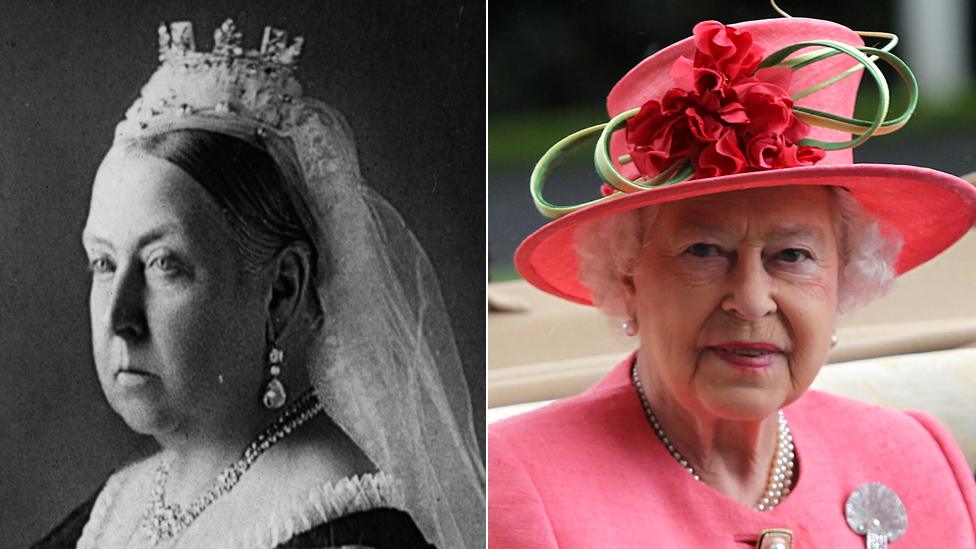Queen Elizabeth II: A constant amid gale-force changes
- Published
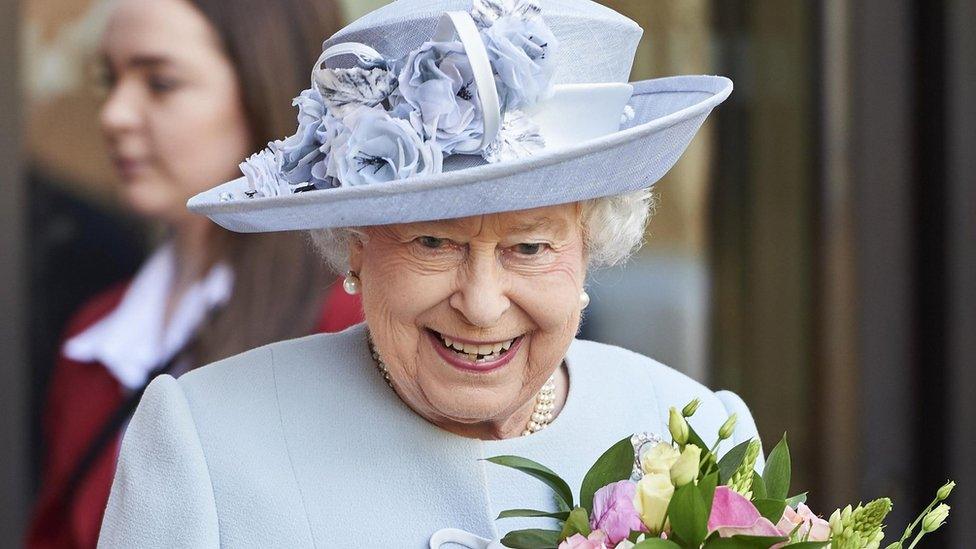
Steadfast. Constant. Dutiful.
These are the words which are used most frequently to describe Queen Elizabeth II, monarch and head of state of the United Kingdom and of her "other realms and territories".
Few, I think, would disagree with these characterisations of a widely respected sovereign whose reign has entered the record books.
She is already the oldest monarch in British history. That milestone was passed on 20 December 2007 when she overtook the record set by her great-great-grandmother Queen Victoria, whose reign ended with her death in 1901 at the age of 81 years and 243 days.
Now, on 9 September 2015, Elizabeth II will outstrip the length of Victoria's reign and - after 63 years and 216 days on the throne - she will become the longest-reigning king or queen in the 1,000 and more years of the monarchy in Britain.



It's easy to reel off the statistics. It is harder to visualise the Britain of early 1952 when Elizabeth acceded to the throne on the death of her father, King George VI.
And it is harder still all these years later to imagine a Britain without the figure who, across all the decades since, has been a backdrop throughout the lives of the overwhelming majority of its citizens.
Post-war Britain
In 1952, Britain was struggling in the aftermath of World War Two. The legacy of that conflict was pervasive. It affected everyday life in ways which are hard for us to grasp fully today. Rationing, for example, was still in force on basic foodstuffs such as tea, butter and sugar.
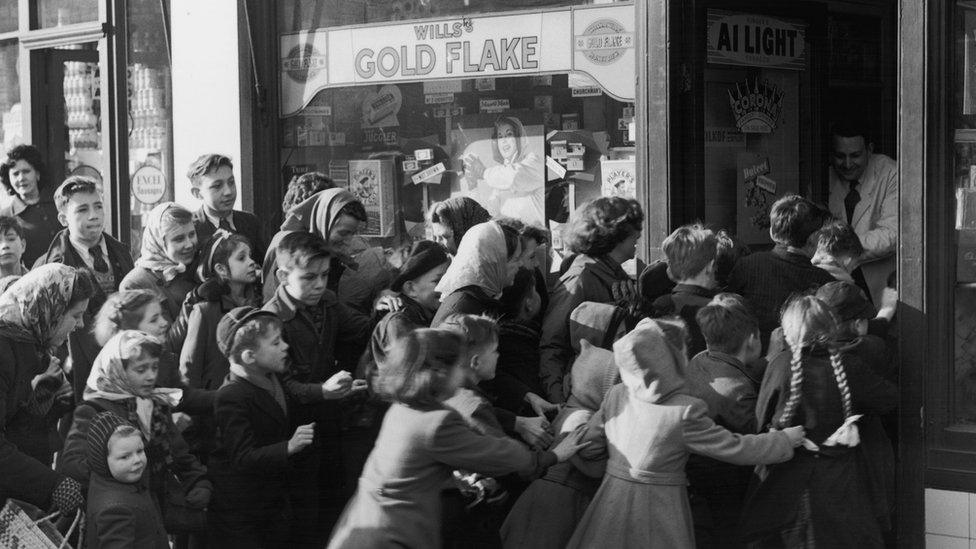
Confectionery rationing ended in February 1953, much to the delight of schoolchildren, but other rationing remained in place until 1954
Britain in the early 1950s was a country which was still closely aligned to the attitudes and lifestyles which had been prevalent in the early decades of the 20th century.
It was a nation of about 50 million people, in which deference and class distinction were still strong, where murderers were still hanged, homosexual behaviour was illegal and where mass immigration had yet to begin.
There were no motorways or supermarkets and only about a million and a half households had a television set on which to watch the one, rudimentary black and white channel broadcast by the BBC.
As the Queen's reign began, Sir Winston Churchill occupied Downing Street, Joseph Stalin the Kremlin and Harry S Truman the White House.
Each of these men had borne the burden of leadership during the war. They were elderly and approaching the end of their respective political careers: Churchill by then was close to 80.
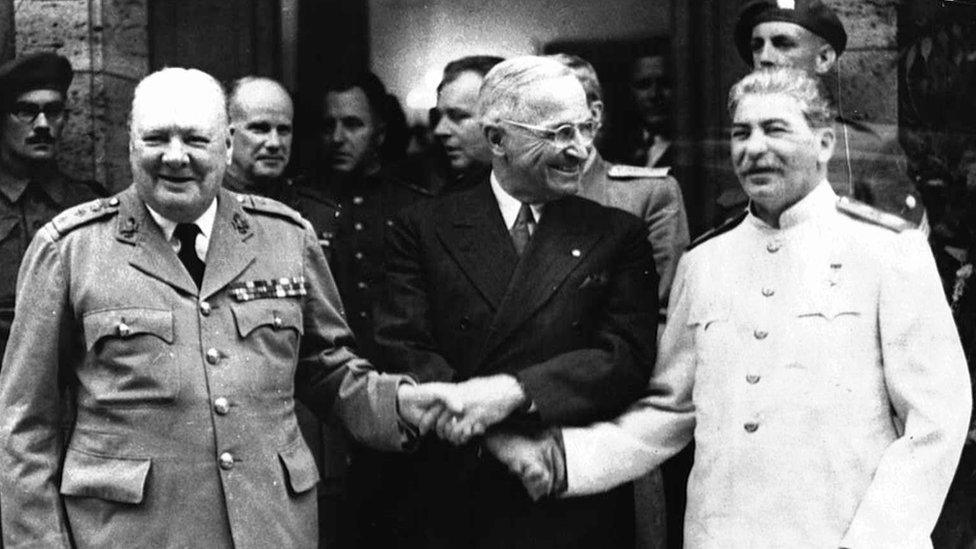
Churchill, Truman and Stalin (pictured here in 1945) were all in office when the Queen acceded to the throne in 1952
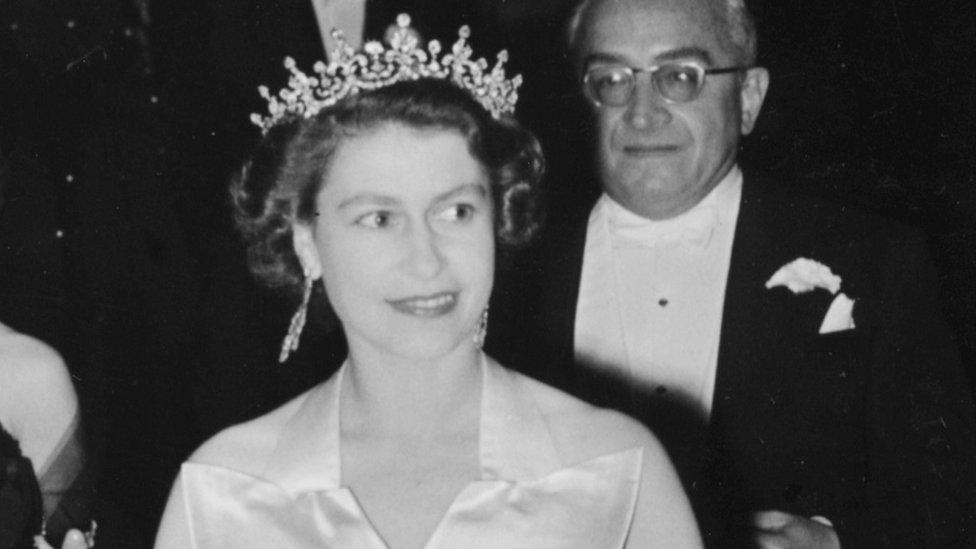
The young Queen cut a very different figure
Suddenly the United Kingdom had a young woman, just 25 years of age on the throne.
Gale-force changes
That throne still had a significant international presence. The "British Empire" remained a reality. Among the "realms and territories" of which Elizabeth was head of state was much of Africa, quite apart from the former "dominions" of Canada, Australia, New Zealand and (still, then) South Africa.
But in that, as in so much else, this Elizabethan age was to be characterised by change - and not simply the "wind" which swept through the British territories of Africa, but something of, at times, gale-force proportions which has gripped pretty much every aspect of life across each of the decades of her reign.
How often it is said that the Britain of 2015 is hard to recognise from the nation of 1952.
The country's position in the world has been realigned, from "Empire" to Europe, and everything from social attitudes and cultural composition to its industrial base and economic performance has been transformed.

The royals have faced several family traumas, including the death of Diana, Princess of Wales in 1997
The royal family too has been buffeted, by changing attitudes - the deference of the 1950s gave way long ago to an aggressive curiosity from sections of the media - and by a succession of family traumas, with marriage breakdowns and finally, in 1997, the death in a tragic accident in Paris of Diana, Princess of Wales.
'Permanent anchor'
And throughout it all, the highs and the lows, the Queen has been that "constant" figure, seeing off the detractors and defying the critics.
Decade after decade she has followed the same largely unchanging routine, as reassuringly predictable as the seasons, standing apart a little from her age and embodying the timeless virtues of stoicism and duty.
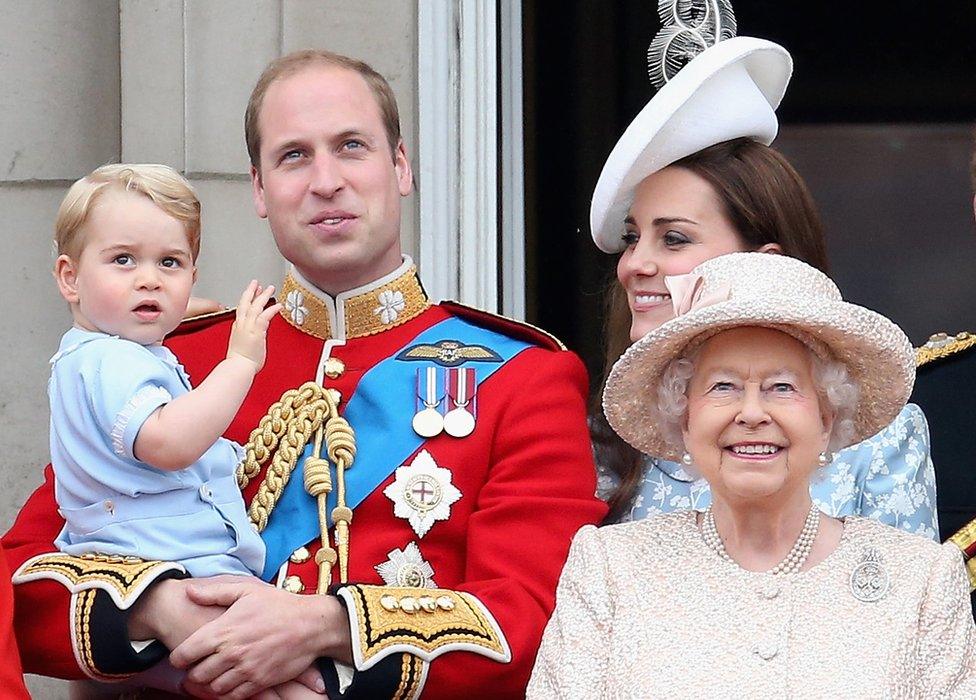
Prince William has paid tribute to his grandmother's "innate sense of calm and perspective"
It's a record which, in so far as these things can ever be gauged, would appear to have placed the monarchy in pretty much as strong a position now in the UK as it was when she inherited the throne.
In Prime Minister David Cameron's view she has been "a permanent anchor, bracing against the storms and grounding us in certainty".
Her grandson Prince William takes comfort from the example she's set of "duty and compassion" and from what he calls her "innate sense of calm and perspective".
And so it will continue. There is no question of her retiring. She will continue seeking, as she said in a broadcast on the night of her coronation, to be "worthy of your trust".
Whatever your views on the merits of a constitutional monarchy, there are few I think who will fault the example of this particular, record-breaking monarch.
Queens of the modern age
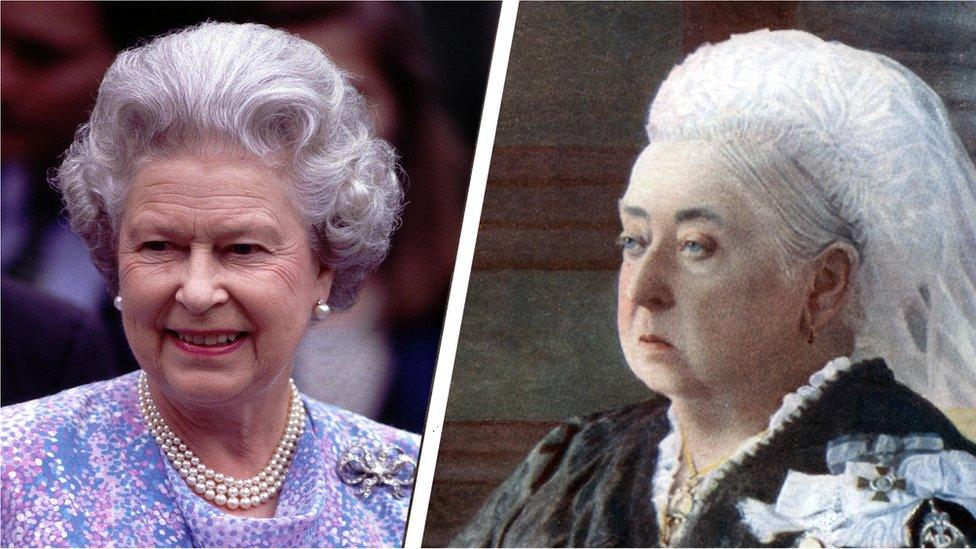
Elizabeth II has reigned for 63 years and seven months, matching Victoria I's record
Queen Victoria was Elizabeth II's great-great grandmother
Victoria became queen at 18 while Elizabeth was 25
Elizabeth II rides in the same coach as Victoria did for the annual State Opening of Parliament
Both queens were shot at by a lone gunmen while out riding near Buckingham Palace
Elizabeth loves the private royal estate at Balmoral in Scotland, which was bought by Victoria
Victoria ruled over an Empire of 400 million people. Elizabeth is head of state for 138 million people
- Published7 September 2015

- Published6 September 2015
